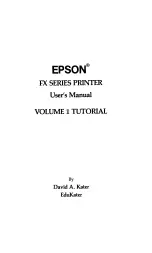
-
5
-
-
6
-
Understanding CallExtend
Programming
After CallExtend has been connected to your phone system, it must be
programmed.
CallExtend is programmed by dialing digits on a standard touch-tone
phone connected to the ADMIN port of the unit.
CallExtend's Programmable Memory:
PAGES
:
CallExtend's programmable memory consists of eight banks of data
storage, called PAGES. Each PAGE of programming tells CallExtend
how to handle call transfers. The PAGES to be programmed corre-
spond to each first digit a caller can dial (e.g., program PAGES 1 & 2
if callers can dial 1 for sales or dial extensions 210, 220, etc.).
ROWS
:
Each PAGE of CallExtend memory has room for eight ROWS of
instruction sets detailing how to transfer calls.
DATA
:
And each ROW on the PAGE can store up to eight fields (single
touch-tone digits) of
DATA.
Following is a graphical representation of this memory storage system:
When you begin programming CallExtend, you will first program
PAGE 0
with
your
system settings
and your
receptionist’s extension.
Then, you will program
each PAGE of CallExtend memory that corresponds to
the first digit to be dialed by the calling party.
PAGES can be programmed for
direct extension dialing or single digit dialing from a menu. Last of all, you will
program your
voice messages.
For example: If you want to have callers dial directly to extensions that start with a
1, you will program PAGE 1 of CallExtend with the instructions for direct extension
dialing. If you want to have callers dial a 2 to reach extension 100, you will program
PAGE 2 with the instructions for menu dialing. If you want to have callers dial a 3
to reach a second-level menu, you will program PAGE 3 with this second-level
menu.
You need only program PAGE 0 and the PAGES of CallExtend that correspond
to the first digits callers will be dialing.
The
CallExtend Programming Guide
included with this manual has a separate
sheet for each PAGE of CallExtend's memory, for you to record your programming
entries.





































